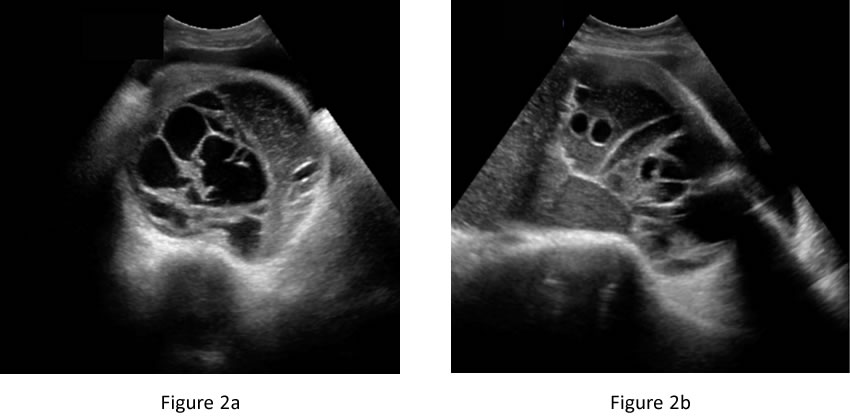Melinda was 39 years old and had a kidney transplant after years of progressive kidney failure. Unfortunately, she did not regain good kidney function and, additionally, developed a large and growing cystic mass in her abdomen.
CT and MR scans suggested that the mass was due to the recent transplant surgery and would likely resolve. However, the scans were performed without CT or MR contrast agents, which are both kidney toxic and, therefore, not used in patients with kidney failure such as Melinda. Many months passed with progressive increases in the size of the mass — and no diagnosis or explanation.

Eventually, a contrast enhanced ultrasound (CEUS) examination was ordered. CEUSuses a very safe “microbubble” ultrasound contrast agent (UCA) that has no kidney toxicity and can be used on patients with impaired kidney function.
The ultrasound-based examination showed a well-defined mass originating in the right ovarian region. It was complex with both septa and nodules arising from the cyst wall.

The UCA showed the presence of many microbubbles within the septa and nodules, suggesting a tumor arising in the right ovary.

Surgical excision confirmed an ovarian tumor, and following removal of the tumor Melinda’s condition slowly improved along with her kidney function.
Fortunately for Melinda, UCAs can be used in patients with kidney failure to make diagnoses that are not possible with CT or MR due to the kidney toxicity of CT and MR contrast agents.
Yet every day in America and elsewhere, thousands of patients with kidney failure are booked to receive a CT or MR scan, even though diagnostic usefulness will be compromised by the inability to use CT or MR contrast agents in this patient population. Without the CT and MR contrast agent, these scans do not differentiate tissue, which in turn allows for distinguishing a tumor from normal tissue. By comparison, CEUS, performed with microbubble UCAs, may show information comparable to contrast-enhanced CT and MR scans — without any risk to the patient’s kidneys.
Melinda’s case provides an excellent example of the incredible value of microbubble UCAs for patients with kidney failure. These safe agents allowed Melinda’s medical team to diagnose the tumor in her ovary, allowing for its safe and successful surgical removal in spite of its considerable size.
Dr. Stephanie Wilson is a clinical professor of radiology and gastroenterology at the University of Calgary and is the Co-President of ICUS.
Reproduced with permission from:
Sawhney S, Wilson SR, Can Ultrasound With Contrast Enhancement Replace Nonenhanced Computed Tomography Scans in Patients With Contraindication to Computed Tomography Contrast Agents? Ultrasound Q. 2017 Jun; 33(2):125-132






